Pablo Alvarez
Posts by Pablo Alvarez
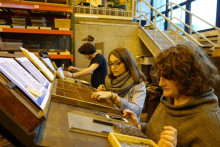
An extraordinary project is currently taking shape at the Wolverine Press, the letterpress studio at the University of Michigan. Led by Rebecca Chung (UMSI) and Fritz Swanson (Wolverine Press), a team of U of M students is working on a handset edition based on the G gathering from the second quarto of Hamlet, published in 1604 and conventionally known as Q2. In this gathering you can read what is probably the most famous soliloquy Shakespeare ever wrote: “To be, or not to be". In brief, the students are recreating the old printing technique of setting the type as a compositor would have done it in the seventeenth century.
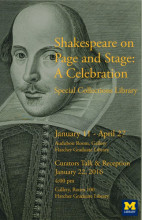
We are pleased to announce the opening of a new exhibit from the Special Collections Library: Shakespeare on Page and Stage: A Celebration (Audubon Room, January 11-April 27, 2016). The exhibit is a historical journey through different versions of Shakespeare’s plays as they were edited for publication or interpreted for the stage. Starting with the Second Folio (1632), our display includes a selection of landmark editions by authors and scholars like John Dryden, Nicholas Rowe, Alexander Pope, Samuel Johnson, and Edmond Malone. It explores the staging and costuming of productions such as Charles Kean’s archaeologically-informed, elaborately-costumed 1856 production of The Winter’s Tale, and Maurice Browne-Ellen Van Volkenburg 1930 production of Othello, casting Paul Robeson as the first black actor to play Othello on the London stage in a century. It also includes an extraordinary multi-media feature in the form of a selection of video clips of famous film adaptation of Shakespeare's plays.
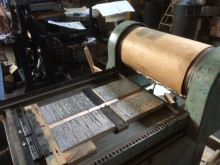
As part of the upcoming exhibit "Shakespeare on Page and Stage: A Celebration" (Audubon Room, January 11- April 27) we decided to include a facsimile version of a quarto gathering based on a real seventeenth-century quarto edition of a play held at the Special Collections Library: The tempest, or, The enchanted island. A comedy. As it is now acted at Their Majesties theatre in Dorset-Garden (London: H. Herringman, 1690), edited by John Dryden & William Davenant. Read the rest of this blog post if you wish to learn more about what a quarto is and how the folks from the Wolverine Press printed this replica.
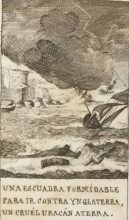
We have recently purchased an extremely rare illustrated history of Spain. It consists of just twenty-four oblong leaves (152 x 262 mm), each of them containing six illustrations with their respective descriptive narratives below. Each of these pairs highlights important events in Spanish history from Antiquity until the reign of Philip V (1700-1746). There is no letterpress involved in the making of this book. The rectos of the pages have been entirely designed and printed by using the process of copperplate engraving.

We have recently purchased this very rare Japanese book on surgery for our History of Medicine Collection, which is particularly comprehensive on the history of surgery from the Middle Ages throughout the Renaissance. Since our holdings on this subject mainly focus on Western medicine, this Japanese imprint is a long overdue addition, being an extraordinary witness of one of many cultural exchanges between Japan and Europe from the sixteenth century onward.
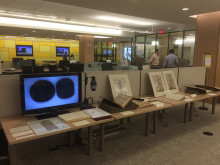
We just hosted our annual donors' reception in the newly renovated space of the Taubman Library last Thursday! As always, it was a great opportunity to express our gratitude to all our friends for having supported the University of Michigan Library throughout the years.
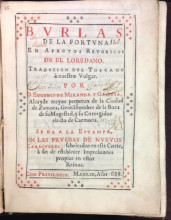
In a previous post, I argued that we must judge a book by its cover because the design of an early binding can tell us much about the social status of its former owner. Now, I would like to argue that we can learn a lot about early printing history by examining the preliminary pages of a book.

A recent addition to our holdings on the history of medicine is a fascinating collection of twenty-five university dissertations, treatises, prize-winning essays, books, and reports, on the subject of milk. Ranging from 1659 to 1822, and published across Europe, these works are extraordinary witnesses of how milk was thoroughly studied from a chemical, medicinal, nutritional, and even a social perspective.

'Sammelband' is a German term meaning 'anthology', which, in a general sense, bibliographers often employ to describe a bound volume that contains a group of separately published works. Our featured sammelband volume also includes handwritten inscriptions revealing a fascinating provenance story.
![Arthur Dee (1578-1651). Fasciculus chemicus, abstrusae hermeticae scientiae, ingressum, progressum, coronidem, verbis apertissimis explicans [Paris: 1631]](/sites/default/files/styles/medium/public/img_0688.jpg?itok=PrvvVdZE)
Shortly after I completed a blog post arguing that the Special Collections Library holds a book formerly owned by Isaac Newton, another one has just resurfaced from the Le Roy Crummer Collection, part of our rich holdings in the history of medicine.